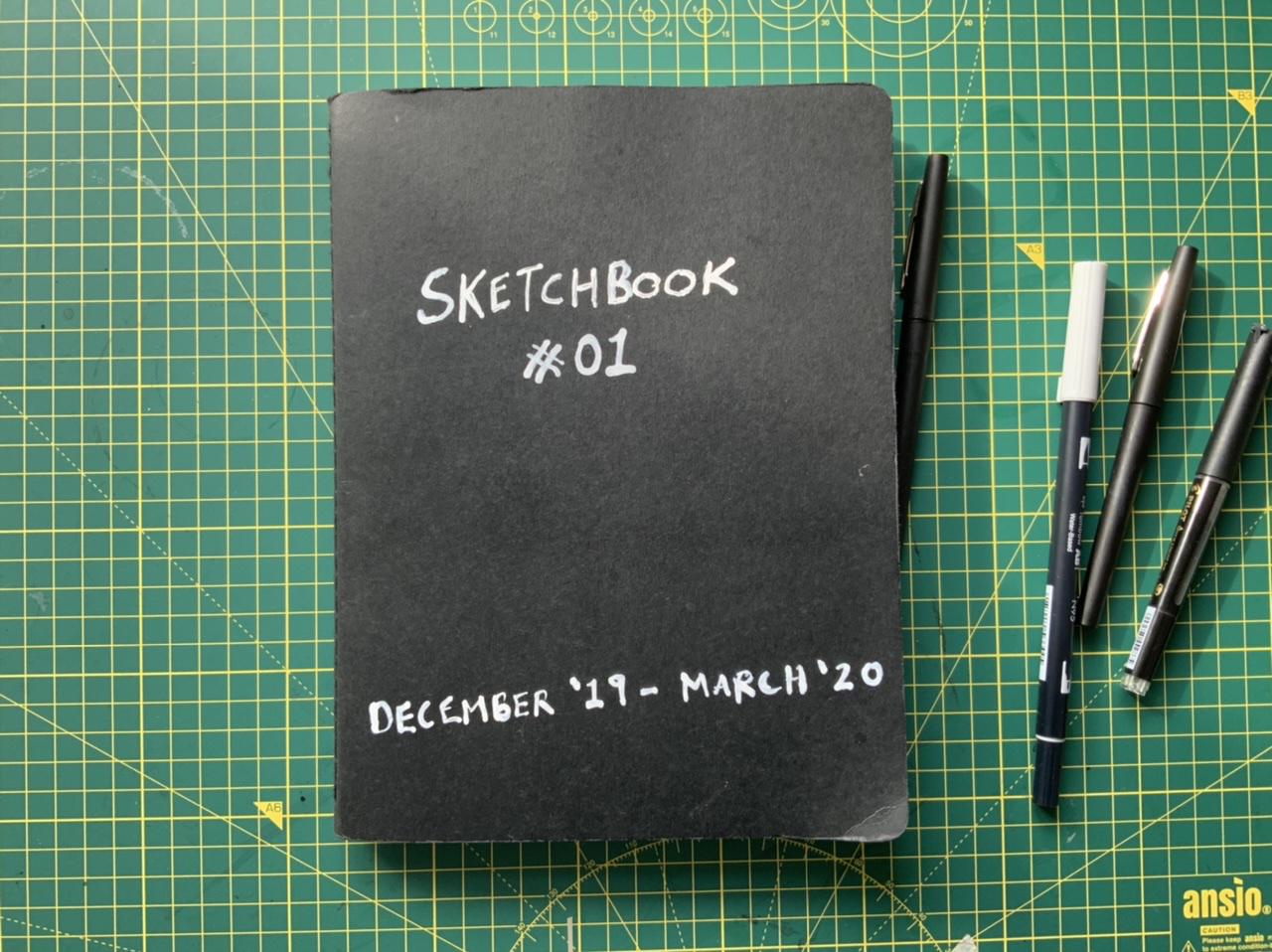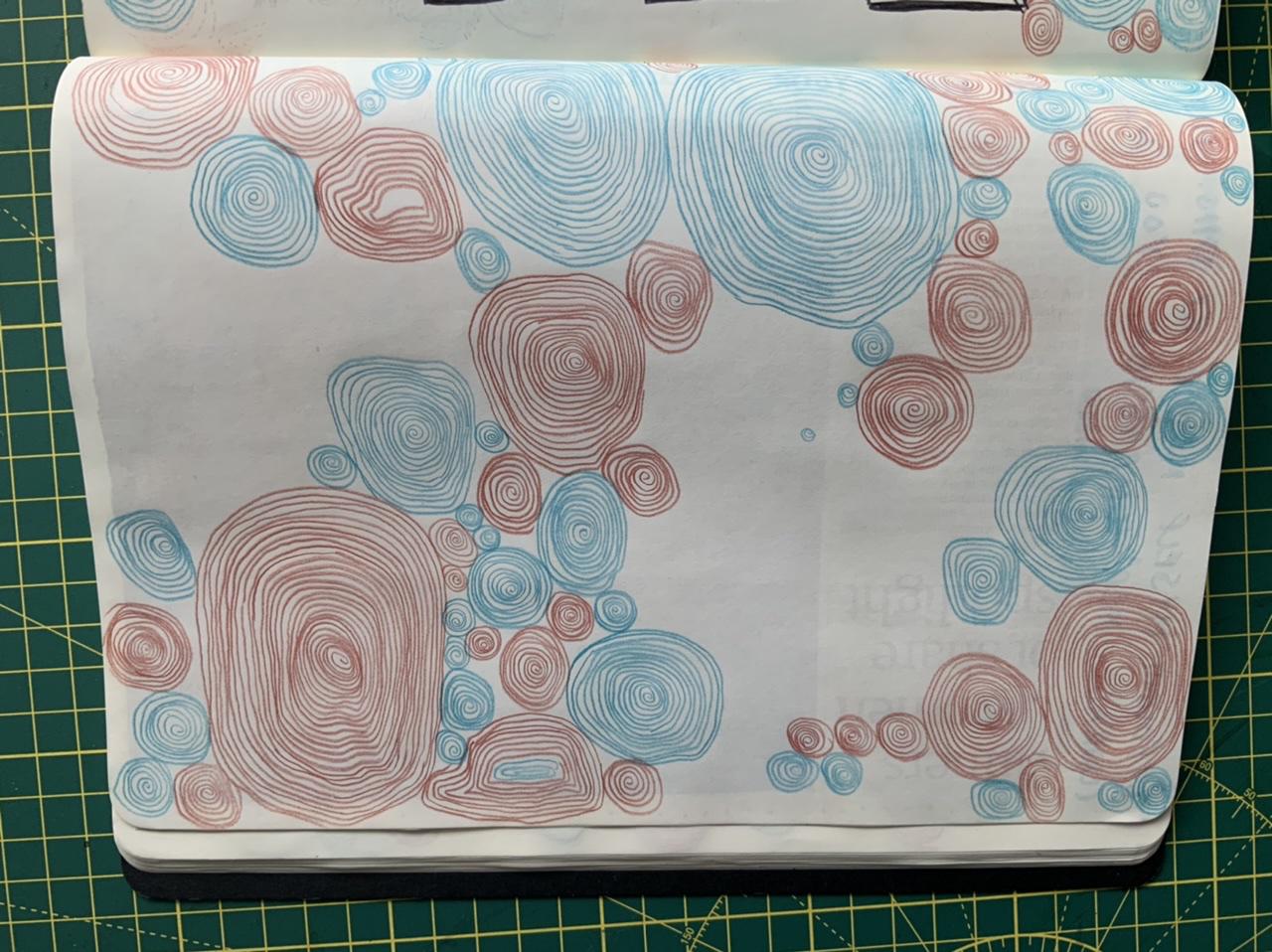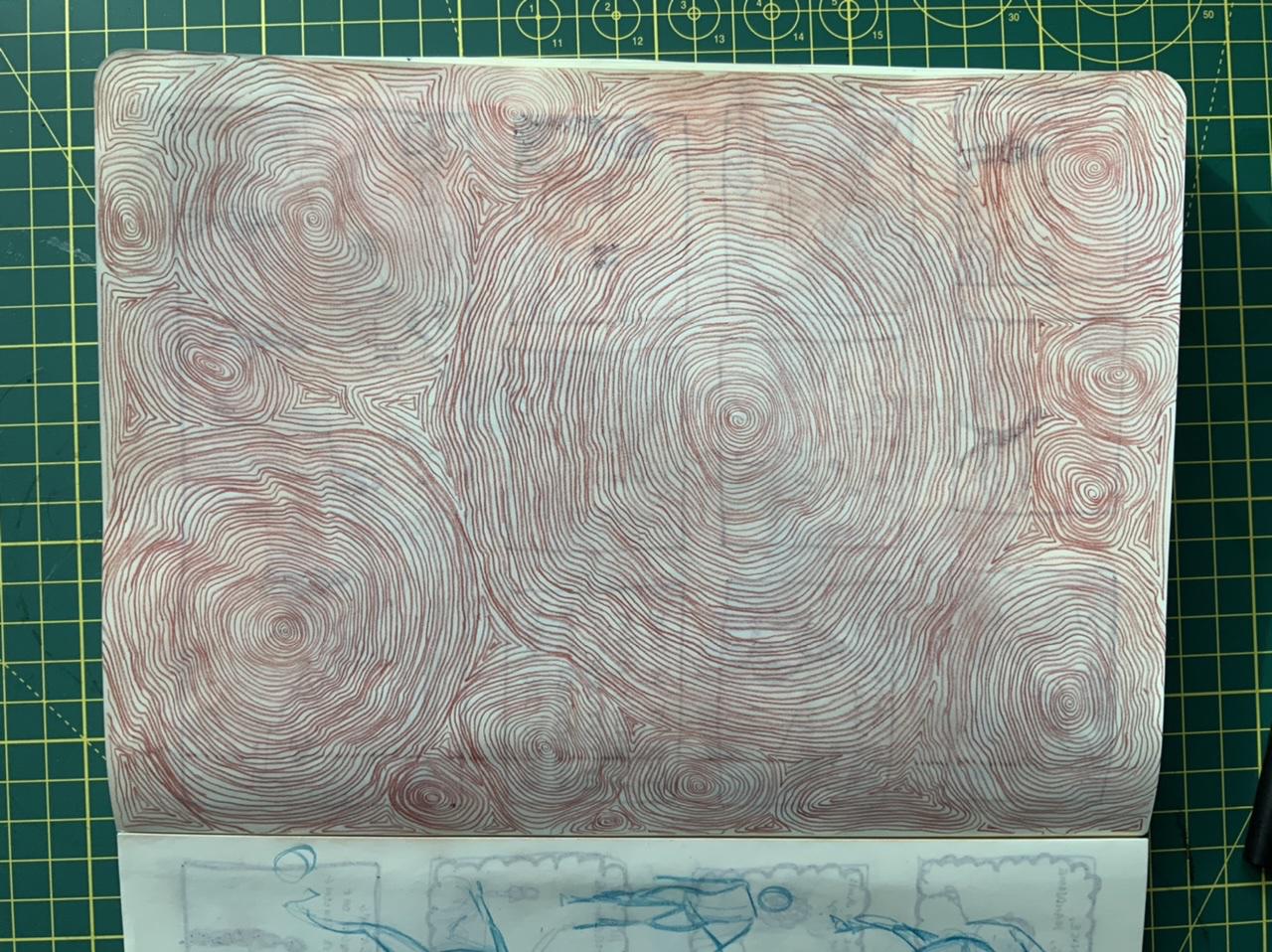I finally finished my first sketchbook yesterday! As I wrote back in January (#53), the goal for this year is to fill sketchbook pages, as many as possible.

The first half of the sketchbook is filled with collages created from newspaper and magazine clippings.
Then drawings cautiously began to appear. First, gesture poses I glued in from my weekly life-drawing class, then sketches of objects and landscapes (#54) doodles (#56) and finally little comics (#60).
It has taken me a lot longer than I thought to fill this first sketchbook - I want to increase my pace significantly in the new one.
Without imposing any strict rules, I am going to try a daily routine of filling four pages with the following: 1) a page of warm up lines and spirals 2) a page of improv 3) a page of drawing from reference 3) one page of panels.
Spirals
In Syllabus (#58) Lynda Barry describes an exercise she gives her students to draw a spiral in the middle of a page. The aim is draw the next layer of the spiral as close to the previous one - without touching it.
If the lines touch, she says, you get electrocuted and have to start a new spiral.
It’s a great exercise for a few reasons. Firstly, like collage, it requires virtually no cognitive effort, so it’s a great warmup exercise before the caffeine kicks in. At the same time it demands a certain kind of concentration on the right-hand side of the brain: it is almost meditative. And thirdly, much like practicing scales on a piano, it warms up your muscles and helps you build accuracy with your pencil or pen.
(If you like this kind of thing, this video I found has ten quick exercises to practice your muscle control, observation and copying skills, all important for visual artists.)
Last month I started drawing a spiral or two - within days they were everywhere, spilling out onto other pages like multicoloured mould spores:

And last week I couldn’t stop myself filling a whole page!

I love how organic this page is: these spirals look like a cross-section of a tree trunk, or finger prints, or blood cells under a microscope.
If drawing lots and lots of spirals seems pointless, I do think there is something quite profound behind Lynda Barry’s exercise: it changes our relationship to drawing.
When I begin drawing a spiral, I can’t possibly tell how it is going to look when it is finished. It is not something I ‘see’ in my mind and then try to reproduce on paper. Instead, the drawing is led by my hand and it becomes what it wants to be.
It might be the simplest way of connecting with that sense of ‘aliveness’ that we usually only see in children’s pictures; drawing as a way of thinking.
What if I could approach all drawing like this?
And look - these pesky spirals have already started spreading in the new sketchbook!

Until another Sunday soon,
